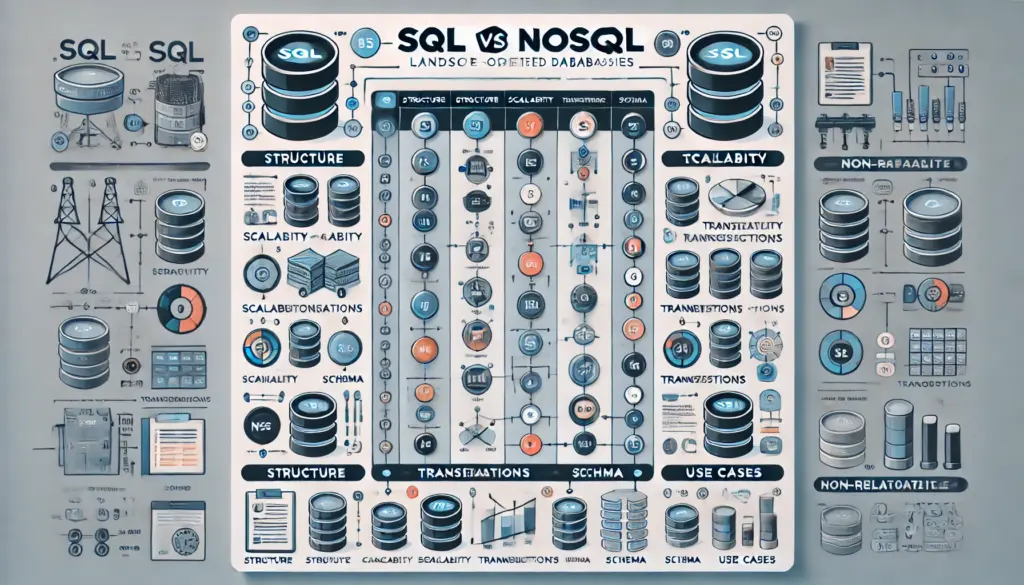📖 What is SQL? A Beginner’s Guide to Databases & Queries
What is SQL: In today’s data-driven world, SQL (Structured Query Language) is an essential skill for anyone working with databases. Whether you’re a developer, data analyst, or IT professional, understanding SQL is a game-changer.
In this guide, you’ll learn:
✅ What SQL is and why it’s important
✅ How databases work
✅ Basic SQL queries with examples
By the end of this post, you’ll have a solid foundation to start using SQL in real-world applications. 🚀
📌 1. What is SQL?
SQL (Structured Query Language) is a programming language used to interact with databases. It allows you to store, retrieve, update, and delete data efficiently.
✅ SQL is used in web development, data analysis, and business intelligence.
✅ It works with relational databases like MySQL, PostgreSQL, SQL Server, and Oracle.
✅ SQL is the industry standard for database management and is widely used by companies like Google, Amazon, and Facebook.

📌 2. How Do Databases Work?
A database is a structured collection of data. It organizes information into tables, just like an Excel spreadsheet.
Example of a Database Table (Customers Table)
| ID | Name | City | |
|---|---|---|---|
| 1 | Alice | alice@email.com | New York |
| 2 | Bob | bob@email.com | Chicago |
| 3 | Charlie | charlie@email.com | Miami |
Key Components of Databases:
✔ Tables – Store structured data
✔ Columns – Define the type of data (e.g., name, email)
✔ Rows – Contain individual records
✔ Primary Keys – Unique identifiers for each row

📌 3. Writing Your First SQL Query
SQL lets you retrieve data from a database using the SELECT statement.
Example Query: Get all customers from the database
SELECT * FROM Customers;✅ The * means select all columns from the Customers table.
✅ This query returns all records stored in the table.
📌 4. Filtering Data with WHERE Clause
Want to find specific records? Use the WHERE clause to filter results.
Example Query: Get customers from New York
SELECT * FROM Customers WHERE City = 'New York';✅ This query retrieves only the records where the City is “New York.”
📌 5. Sorting Data with ORDER BY
Use ORDER BY to sort data in ascending (ASC) or descending (DESC) order.
Example Query: Sort customers alphabetically by name
SELECT * FROM Customers ORDER BY Name ASC;✅ ASC sorts in ascending order (A → Z).
✅ DESC sorts in descending order (Z → A).
📌 6. SQL vs NoSQL: What’s the Difference?
| Feature | SQL (Relational) | NoSQL (Non-Relational) |
|---|---|---|
| Data Structure | Tables with rows & columns | Documents, key-value pairs, graphs |
| Schema | Fixed, structured schema | Flexible, dynamic schema |
| Use Case | Transactional systems, analytics | Real-time apps, big data, social media |
✅ Use SQL when you need structured, consistent data storage.
✅ Use NoSQL when dealing with unstructured or rapidly changing data.

📌 Final Thoughts: Why Learn SQL?
SQL is one of the most valuable skills in today’s job market. It’s used for:
✔ Data analysis and business intelligence 📊
✔ Backend development for websites & apps 🖥️
✔ Managing large-scale enterprise databases 🏢
Ready to learn more? In the next blog, we’ll explore SQL SELECT, WHERE, and ORDER BY in depth. Stay tuned! 🚀